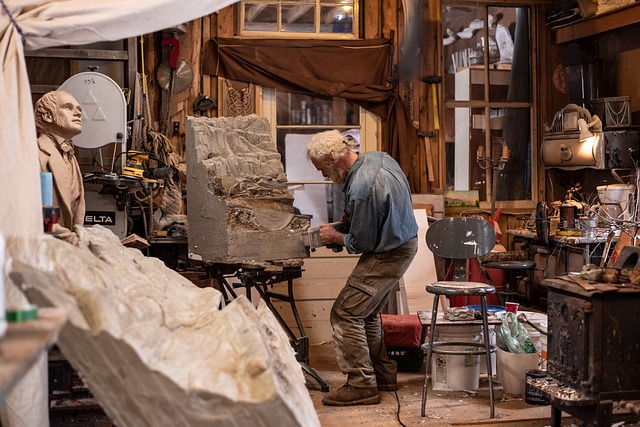
Creative Creation During Digital Detox Technology vs Human Connection
When the glow of screens begins to blur the edges of daylight, many find themselves craving a pause. A digital detox is more than merely turning off notifications; it is an invitation to reclaim quiet, to listen to the hum of the world without interference, and to nurture the dormant wells of creative creation that lie within.
Understanding the Digital Diet
The term “digital detox” often conjures images of unplugged cabins and silent hikes, but its scope extends into daily habits. It involves consciously limiting time spent on devices, setting boundaries for social media, and creating intentional gaps between information intake. These gaps are not voids; they are fertile ground for the mind to wander, to dream, and to experiment with ideas.
- Scheduled tech‑free blocks: a 30‑minute window before bed, a lunch hour without a phone.
- Environment adjustments: placing devices out of sight, using analog tools for tasks like note‑taking.
- Mindful intent: deciding the purpose of each device use rather than default scrolling.
The Restful Connection Between Mind and Body
Sleep, breathing, and gentle movement respond positively to reduced screen time. When our eyes no longer stare at blue light, melatonin production normalizes, allowing deeper restorative sleep. The body’s natural rhythms reassert themselves, and the mind can decompress. This state of rest is a prerequisite for the most profound creative creation, as it clears the clutter of constant stimuli.
“The quieter we become, the more we hear the world’s whispers.” – Anonymous
Technology: Tool or Tether?
In modern society, technology is a double‑edged sword. On one side, it offers instant access to knowledge, platforms for sharing, and tools that can amplify artistic expression. On the other, it can become a tether that binds attention, fosters comparison, and erodes face‑to‑face interaction. The key lies in how we frame technology’s role in our creative pursuits.
- Facilitator of ideas: digital sketchpads, 3‑D modeling, and collaborative whiteboards can help flesh out concepts that would otherwise remain abstract.
- Potential distraction: endless feeds, notifications, and multitasking erode the depth required for sustained creative creation.
- Hybrid approach: using devices as a means to an end—recording a vision, then translating it into a physical medium during a detox period.
Human Connection: The Missing Thread
Human interaction provides a rich tapestry of emotions, stories, and perspectives that inspire artistic expression. Conversations, shared meals, and collaborative projects create a sense of belonging and validation that screens can never fully replicate. When technology is removed, people often rediscover the subtle cues of body language, tone, and eye contact that feed empathy and spark genuine creative dialogue.
Crafting Creativity Without the Click
Embracing a device‑free routine does not equate to a ban on all forms of technology. Rather, it invites a deliberate, measured use of tools, coupled with intentional periods of offline reflection. Below are strategies that have proven effective for many creative individuals seeking to balance digital and human influences.
- Morning Mindfulness: start the day with a journal or sketchpad before opening a laptop.
- Physical Workshops: attend or host a local art class where participants work side‑by‑side.
- Story Circles: gather friends to share narratives that can become the seed for a novel, film, or performance.
- Nature Walks: allow the surroundings to inform your palette or composition.
- Digital Pause: set a nightly alarm that rings when it’s time to unplug and read a book.
Case Study: The Painter Who Rediscovered Palette
A mid‑career painter named Elena found her creative flow stalled by constant email threads and social media. She decided to limit her device use to two hours per day and dedicated the rest to studio time and conversations with fellow artists. Within three months, her brushwork felt more confident, her color choices bolder, and her exhibitions received renewed critical attention. Elena’s story illustrates how a digital detox can catalyze artistic revitalization.
Integrating Technology Mindfully After the Detox
After a period of rest, many return to technology with a new perspective. They recognize its value while guarding against its pitfalls. The integration strategy is simple: employ devices as amplifiers of creative intent, not as replacements for human interaction.
- Set clear goals for each digital session.
- Use communication tools only to facilitate collaborative work, not to replace meaningful conversation.
- Schedule regular “device‑free” hours, especially during creative bursts.
- Keep a log of device usage to monitor and adjust habits.
Community as an Anchor
Building a local or online community focused on shared creative practices can sustain the momentum of a digital detox. Regular meet‑ups, workshops, and informal gatherings foster accountability and collective inspiration. The community becomes a living repository of ideas, critiques, and encouragement—an essential complement to the solitary moments of reflection.
Final Reflections
A digital detox is not a sacrifice but a strategic pause. By withdrawing from constant digital noise, we open space for quiet listening, deep thought, and spontaneous insight. When technology is reintroduced thoughtfully, it becomes a bridge that carries creative ideas into the wider world while preserving the authenticity that comes from human connection. The most profound creative creation emerges when we balance the power of tools with the warmth of shared humanity, and a restful mind that has had time to breathe.

